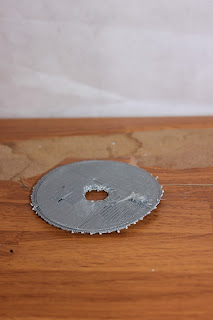Here is my final submission for this course, as well as for my undergraduate degree.
The title of the my object is Shaktiquaver
In making Shaktiquaver I wanted to produce something that was both mechanical and painful in appearance, but pleasing to the touch.
I also wanted to reflect upon the materiality of the plastic cast which many perceive as wastage.
The name comes from the words:
Shakti, which means Bed of nails
and
Quaver, which means To Shake, quiver, or tremble
Shakti also means Energy, Power, Creativity, Compassion.
The energy and power of the circuit creates a connetic movement through a creative form. The appearance of my object is mechanical and painful and when the user discovers the sensuous touch it makes they can feel compassion towards the object for their preconceived feelings towards it.
My final image that I have chosen. It shows off the intricacies of both the 3D print and the wires, and blurs the details of the plastic base.
Above is a creative interpretation of the shapes, and movement of my model. Emphasis is on the twists of the wire structures, the harsh sharpness of the above wire forms, the blurred texture of the plastic shapes and the hexagonal form that dominates the wire arangement.
Above is my final video. In which I tried to show the hidden side of my object, something that is playful and pleasing to the touch, contrasting with its painful and mechanical appearance.
Below are the video credits.
Shaktiquaver
Emotive Physicality
Project 3
DSDN 141
2015
Jayden Hamilton
Victoria University of Wellington
School of Design
Machine Elves by Alan Singley is
licensed under a Attribution-
NonCommercial 3.0
http://freemusicarchive.org/





























































